By Gwen Ferreira & Lisa Chamberlain, Lead Yoga Teachers and YTT Course Leaders and Bali’s Yoga Retreat and Teacher Training Centre Yoga Bliss Lembongan, Nusa Lembongan (Bali, Indonesia)
The number of yoga practitioners has grown exponentially in the last decade, and recent statistics have revealed that 1 in 3 Americans have tried yoga at least once. After being drawn to Yoga originally due to the numerous reported health benefits, practitioners will often seek out opportunities to deepen their practice, and this is where the idea to attend either a Yoga retreat or a Yoga teacher training generally sprouts from.
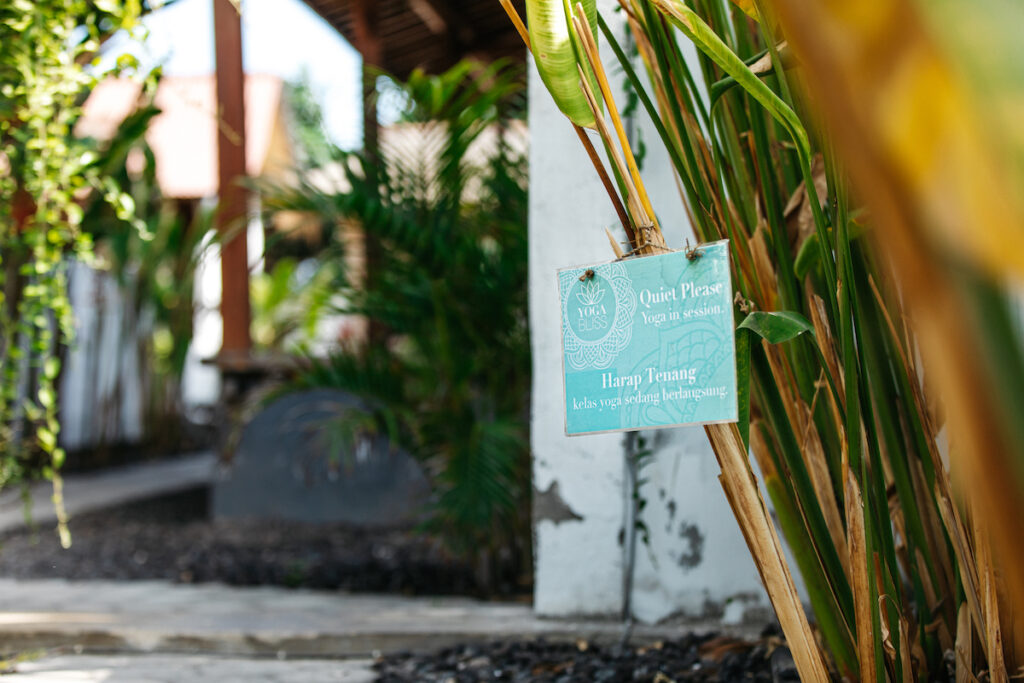
When the desire to attend a retreat or teacher training arises, many students look to incorporate with it some sort of international travel. Asia has become increasingly popular as a “Yoga holiday” destination, with Bali now surpassing India as one of the top destinations for a Yoga retreat.
But 2020 has been a year like no other, with the declaration of a pandemic resulting in unprecedented restrictions in both our daily lives as well as our leisurely activities. The world has all but closed down its doors as far as tourism is concerned, and the future of travel is still largely uncertain.
Yet according to a consumer survey by Travel Leaders Group of approximately 3000 frequent travellers, the fervent desire to travel remains strong amidst the vast majority of travellers, with a substantial 70% of respondents planning to travel in 2021.
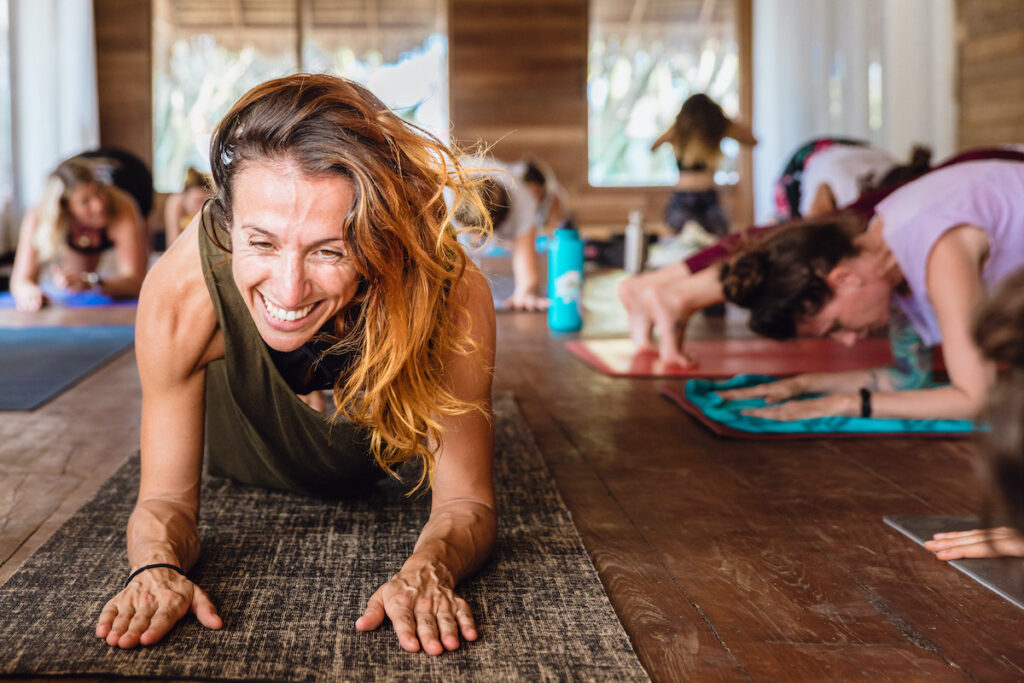
In the interim, Yoga studios and practitioners have been challenged to completely rethink the way Yoga classes, retreats, and even certifications are being conducted. The most obvious solution is to follow along with what a vast majority of other industries are doing and transition to the world of online offerings.
It allows those who may not have otherwise had the opportunity to travel and pursue an education in Yoga to now do so from the comfort of their own homes. There are very clear and distinct benefits to this transition from in-person to online training, with the most significant benefit being accessibility.
In fact, the whole process of studying to become a yoga teacher is now easier than ever; with many courses being self-paced to allow you the opportunity to learn in your own time, and with the rhythm of your current life.
This type of self-paced learning will not only enable you to maintain a full-time job, or stay at home with young children, but it also provides you with the opportunity to fully digest all of the information so that it becomes more than just intellectual knowledge, and the seeds of wisdom may take root.
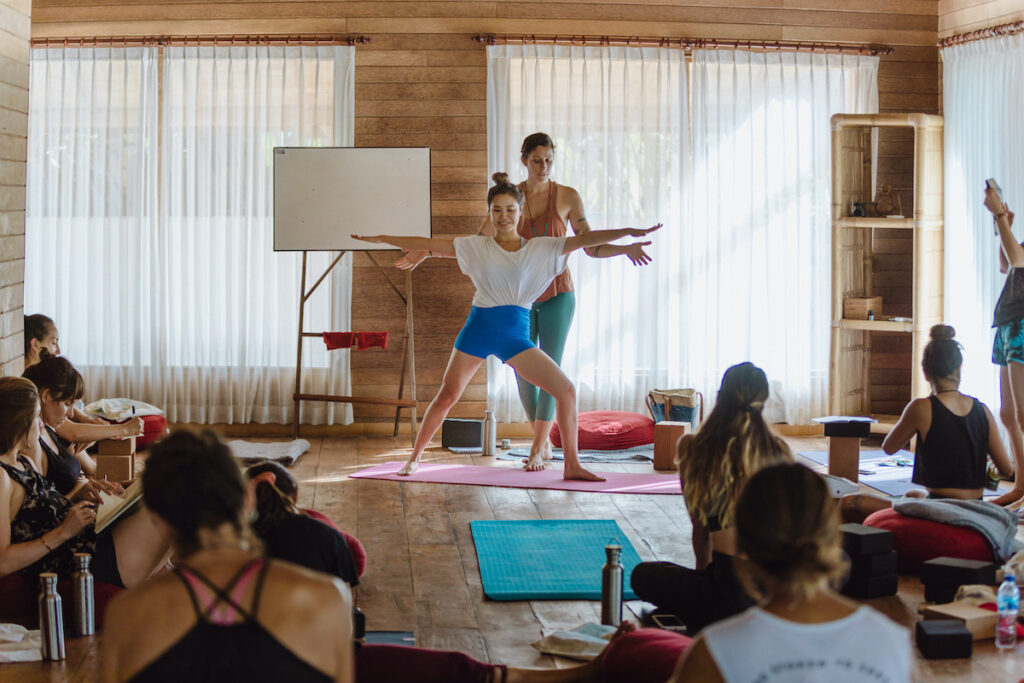
As with most things in life, there are potential downsides with this form of learning as well. Particularly for those who wish to pursue a career in teaching Yoga in a standard studio, or in-person environment. Although there have certainly been advancements, and many YTTs will strive to convince you that the online training is just as good as the in-person ones, there are simply some parts of this experience that cannot be replicated in an online forum.
Manual assisting/adjustments being the most noteworthy one, as both being guided by someone else to find your own depth in a pose, as well as being able to guide numerous others, is an irreplaceable experience from in-person training. There is likewise the ability to find your voice as a teacher, gaining comfort in front of a room full of people, and being able to guide students in a live environment, that really requires doing it in practice with actual students.
Discussing the topic are Yoga Bliss’s Bali-based lead E-RYT500 and YACEP teachers, Gwen and Lisa
We have been running Yoga retreats and Yoga Teacher Trainings at Yoga Bliss Lembongan for more than four years, and although we long for the opportunity to welcome students back to our beautiful island sanctuary, we feel fortunate to be able to offer online alternatives. It is truly remarkable to be able to continue to support students in reaching their goals and dreams, especially through these challenging times.
We also understand that it is not feasible for all to join in-person courses and that flying across the world is, quite frankly, a luxury. With the cost of attending a retreat or training running between $1000 and $5000, for many of us, this is a substantial investment. Having access to parts or even all of a yoga teacher training online has made the deepening of a yoga practice accessible to myriad practitioners.
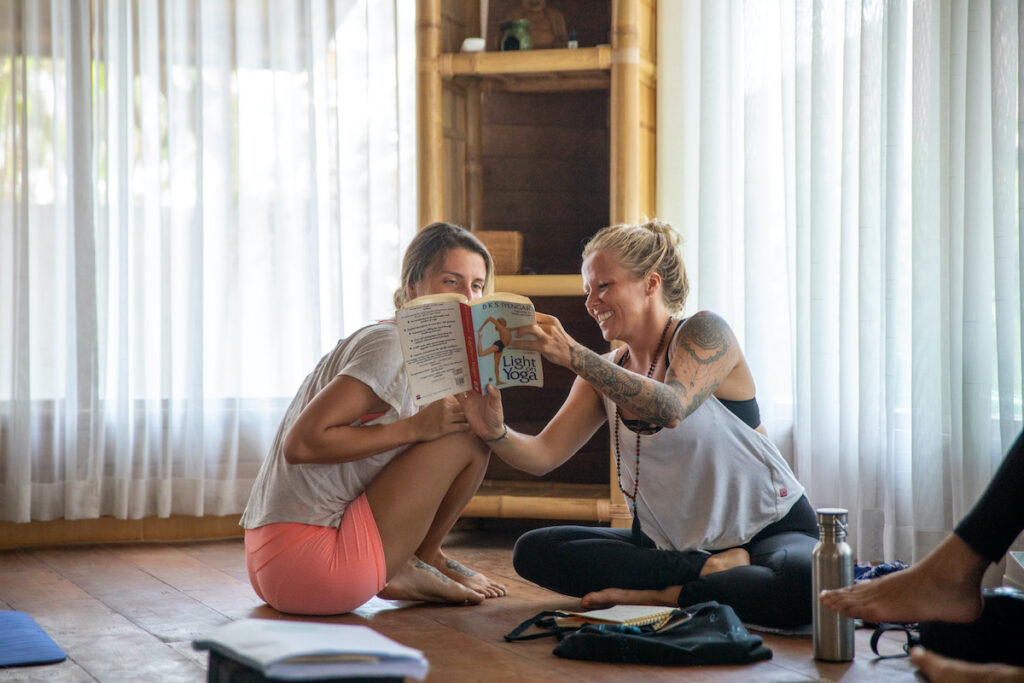
Although we do believe that a lot of information can be transmitted online, there are some aspects that are best learnt in person, at least for the majority of learners.
Yet some of the subjects required as part of a 200hr TTC are even more appropriate for online studies, such as with our 30-Hour Yoga Anatomy Course, where you will expand and develop your understanding of the human body, or with our 20-Hour Yoga Philosophy Course that takes you through the history and evolution of Yoga from its ancient roots to what we see being practiced today.
However, advancing your personal asana practice, or learning how to effectively teach others, are really better done with direct, in-person guidance from an experienced teacher.
One of the greatest gifts of Yoga Teacher Training that is missing from the online experience is human connection. Although we ‘connect’ with people from all over the world virtually through our screens, there is a significant part still missing.
The laughs, the hugs, the energy — they all bring an intensity to this experience that is really irreplaceable via online methods. Staying for a period of time away from your family, your environment, and your habits to dive deep into the study of your own body and mind is so empowering, even more so when you can relax and enjoy a fresh coconut on the beach at the end of each day.
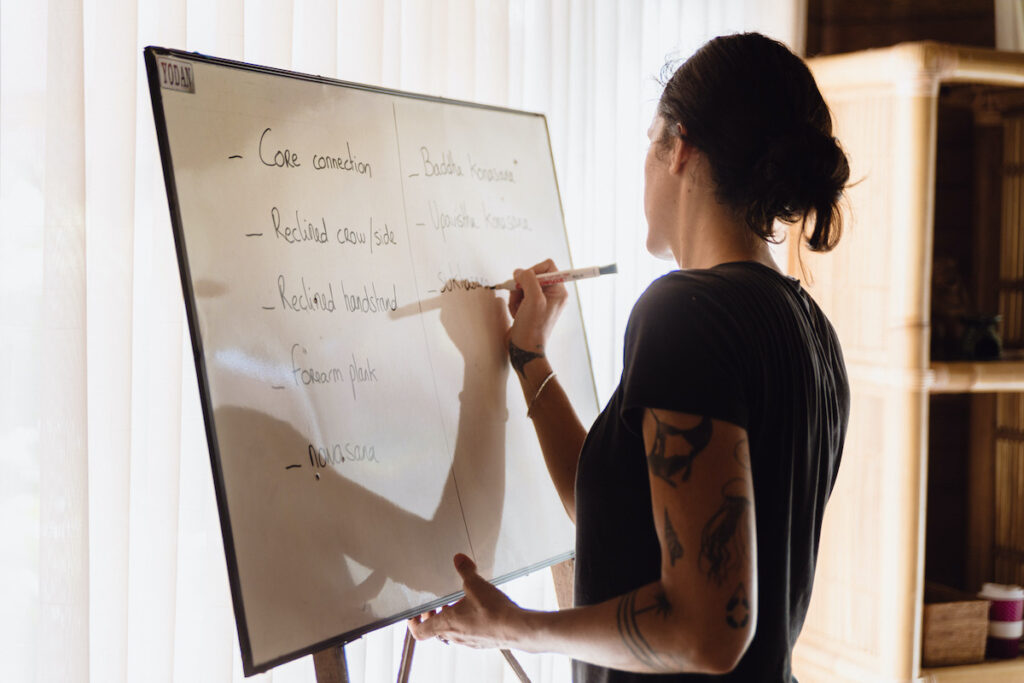
It is why we truly believe we have created something that provides the best of both worlds. Our combined in-person and online approach to a 200hour Yoga Teacher Training offers the ability to learn and really integrate all of the theory at your own pace, while still allowing the opportunity to connect and practice with others who are on a similar journey.
The online portion of this blended training consists of anatomy, philosophy, Yin, and Restorative Yoga, and offers so much more than just introductory concepts and material. For this reason, it is likewise a perfect opportunity for those who are already teachers to broaden their knowledge and further explore some of the core teachings of Yoga.
Should you complete the online portion and decide that you would like to join us in person, you can do so either to fulfill certification requirements or perhaps even as a retreat. During this unique experience, students forge friendships for life and will remember the time they have spent together forever. The decision to embark on an in-person Yoga Training is intense, empowering and life-changing.

5 tips for anyone considering an online YTT:
- Reach out to the school ahead of time and determine if you will be able to get access to your teachers and to obtain extra support as needed.
- Ensure you have lifetime access to your content, whether pre-recorded or live. This will ensure you can review the material as needed, one of the main benefits of online training.
- For a 200-hour YTT, search for opportunities to join a course that allows you to attend an in-person part, particularly if your goal is to teach in person.
- Inquire if you will be able to submit and receive feedback for any coursework, or if there is a forum to ask questions so that you can ensure you are on the right track
- Find out if the school you’re interested in has an online community so that you may connect with current and past students, ask questions, and share pieces of information. Staying connected with others who are on a similar path as you is now more critical than ever!
As we have discussed, there are some aspects to teaching in person that are really difficult, if not impossible, to replicate in an online environment. However, a positive to take away from this year is definitely the, perhaps previously unconsidered, value of learning yoga online.
Whether you prefer this modality of study or not, we are incredibly fortunate as teachers and practitioners to have it as an option. Yoga has evolved in numerous incarnations over its millennia-long existence; to find ways of working with the global pandemic in order to share the practice in new ways is to live in flow rather than resistance – and this in itself is Yoga.
For more information on Yoga Bliss, head to yogablisslembongan.com.

What is Yoga Teacher Training?
Yoga teacher training is a program that provides individuals with the knowledge, skills, and experience necessary to teach yoga to others. These programs typically range from 200 to 500 hours in length and cover a wide range of topics related to yoga philosophy, anatomy and physiology, asana (postures), pranayama (breathing exercises), meditation, and other related subjects.
Yoga teacher training programs can be found in various formats, including in-person, online, and hybrid programs that combine both in-person and online learning. Many of these programs are offered by registered yoga schools (RYS) that have been approved by the Yoga Alliance, an international organization that sets standards for yoga teacher training programs.
During a yoga teacher training program, students typically learn about the history and philosophy of yoga, as well as the physical and mental benefits of practicing yoga. They also learn how to teach yoga classes, including how to sequence postures, instruct students in alignment and safety, and provide modifications and adjustments to suit individual student needs. In addition, students may have opportunities to practice teaching under the supervision of experienced instructors and may receive feedback on their teaching skills.
At the end of the program, students who have successfully completed all of the requirements may receive a yoga teacher certification. This certification allows them to teach yoga in various settings, including yoga studios, gyms, community centres, and on yoga retreats.
Overall, yoga teacher training is a comprehensive program that prepares individuals to share the practice of yoga with others while deepening their own understanding and practice of this ancient tradition.


